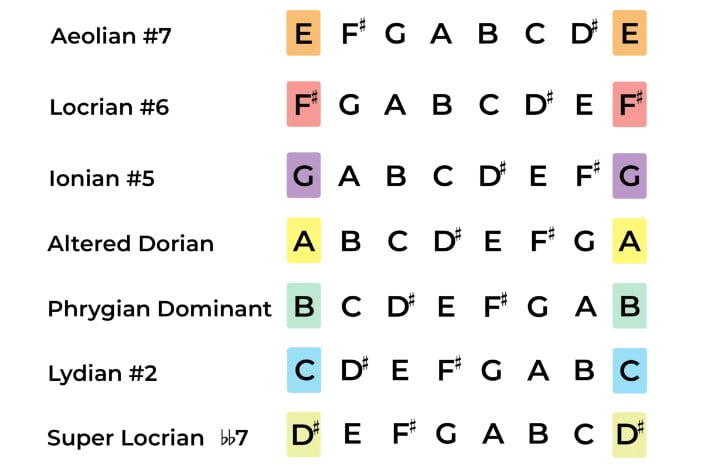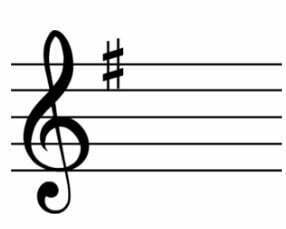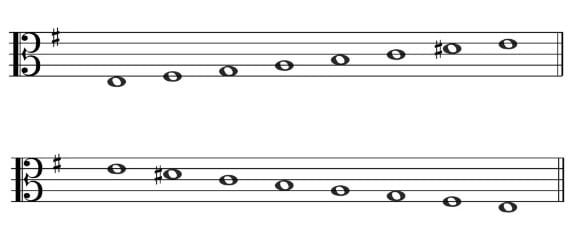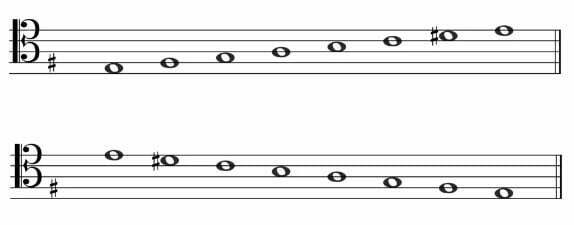The E Harmonic Minor is a 7-note scale, which begins and ends on the note E natural. The main purpose of Harmonic Minor scales is to assist in creating chords, but they are also present in melodies. This scale can be found in a diverse range of music genres, from Mozart and Katy Perry to neo-classical metal.
Contents
NOTES ON THE E HARMONIC MINOR SCALE
The notes of the E Harmonic Minor Scale are: E, F#, G, A, B, C, D#, E
THE E HARMONIC MINOR INTERVALS
The harmonic minor scale is similar to the natural minor scale, except for the 7th degree being raised by a semitone. This modification changes the major 2nd interval between the 6th and 7th notes to an augmented 2nd. The intervals for the E Harmonic Minor scale are shown below, and it is important to note that these intervals remain the same for all harmonic minor scales.

E HARMONIC MINOR MODES
The Aeolian mode and natural minor scale are equivalent, and raising the 7th note of the Aeolian mode leads to the harmonic minor scale, which is denoted as Aeolian #7. The modes have an interesting characteristic in that they are interconnected. For instance, A Aeolian and B Locrian have the same notes, but B Locrian starts on a B. Similarly, C Ionian has the same notes as well, but it starts and ends on a C.
We can use this approach to create modes for E Harmonic Minor, and the notes and names of these modes are presented below.

HOW TO PLAY THE E HARMONIC MINOR SCALE
On Piano
To play the E harmonic minor scale, you can refer to the diagram provided below.

On Guitar
The guitar allows for multiple positions to play the harmonic minor scale. The standard position for this scale begins on an E note, and this shape can be moved up and down the neck to play various harmonic minor scales.

THE KEY SIGNATURE OF THE E HARMONIC MINOR

Typically, the harmonic minor scale is employed in compositions that are in a minor key. Therefore, if we play the E Harmonic Minor scale, our piece will be in the key of E (natural) Minor. Since E minor is the relative minor of G major, it has one sharp in its key signature
E HARMONIC MINOR IN CLEFS
Below is the C Harmonic Minor Scale written in the treble clef, bass clef, alto clef and tenor clef including both ascending and descending.
Treble Clef

Bass Clef

Alto Clef

Tenor Clef

If you’re interested in learning more about music scales, chords, and musical theory, visit our Guitar tunio today
